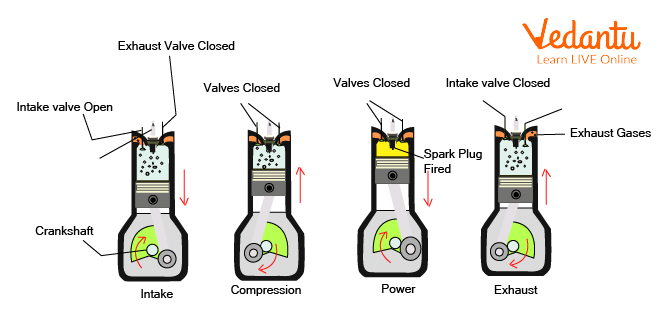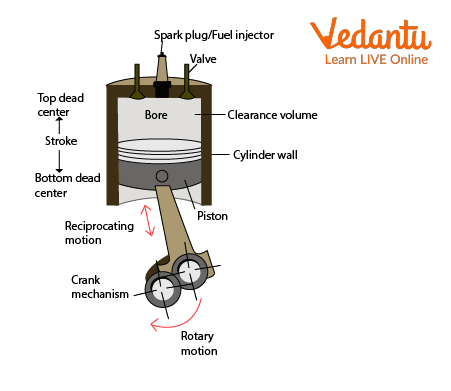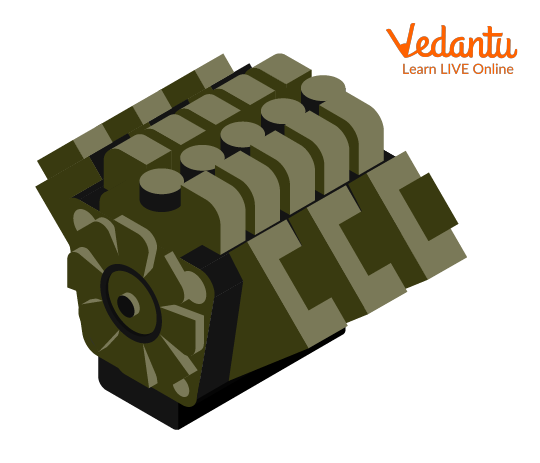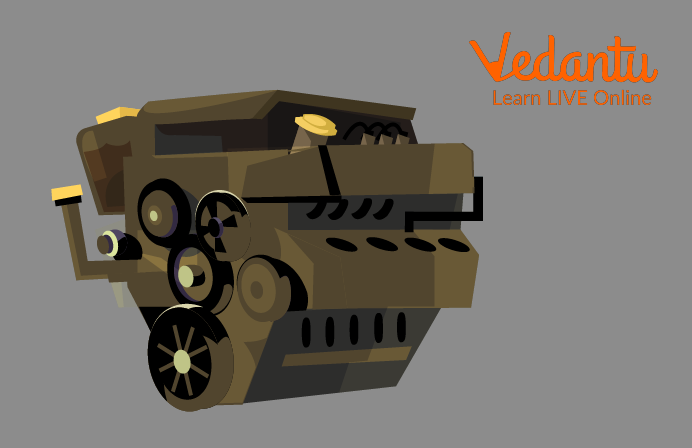




An Overview of Engine Work
Cars, aircraft, lawnmowers, and other machines are all powered by internal combustion. Burning is the definition of combustion. An internal combustion engine operates through the burning of fuel, typically gasoline. Internal-combustion engines are more powerful and lighter than earlier steam engines. They made it possible for cars to exist.
Étienne Lenoir, a French inventor, created the first internal combustion engine in 1860 and installed it in a vehicle. German engineer Nikolaus Otto created a four-stroke engine in 1876. The first successful internal combustion engine was Otto's creation. The diesel engine was created around 1890 by Rudolf Diesel, another German engineer.
In this article, you will learn about engines and their types and functions, and also about the petrol engine working.
What is Engine?
The answer to the question of what is an engine is:
An engine is a device that changes the energy from a fuel into mechanical energy, which in turn generates motion. In the case of cars, gasoline and diesel are the most common fuels used by engines, such as the ones that power them. Alternative fuel types do exist though, including natural gas and biofuels. Engines that generate macroscopic motion from heat are commonly referred to as heat engines in thermodynamics. In this instance, heat is produced as a result of the engine's fuel burning, which drives the pistons.
How Engine Work?
A moving component called a piston slides up and down in a cylinder in many internal combustion engines. Four to eight cylinders are the norm for car engines. A cylinder's top has valves that let air and fuel in and allow burned fuel to escape. A spark plug is also located at the top of the cylinder. The fuel is lit on fire by the spark plug.
The four strokes of the engine's cycle are
Intake,
Compression,
Combustion, and
Exhaust.
A valve opens during the intake stroke, allowing fresh fuel and air to fill the cylinder.
The piston then advances toward the top of the cylinder during the compression stroke. By compressing the fuel and air while keeping both valves closed, the piston produces pressure.
When the piston reaches its maximum height, the fuel burns by a spark from the spark plug. The piston is then forced back down during the combustion stroke, also known as the power stroke, by an explosion of fuel burning. A second valve opens during the exhaust stroke, causing the piston to rise.
It pushes the hot gases from the burned fuel out of the cylinder.

Four-Stroke cycle
The motor shaft, an exterior to the cylinder engine component, is connected to the piston. The piston turns the crankshaft as it moves. Other components that power the machine are connected to the crankshaft.
The internal combustion engine diagram is given below which explains the working and functions of the following parts:
Two-stroke, diesel, rotary, and generator internal combustion engines are additional varieties. Two-stroke engines use two strokes as opposed to four. The fuel burns in diesel engines due to hot air, not a spark. A rotating component serves as the engine's piston in rotary engines. Air is continuously drawn into the front of turbine engines, which are used in jet aircraft. At the rear of the engine, the exhaust exits.
Despite their strength, internal combustion engines lose most of the energy from burning fuel as heat. To prevent the engines from overheating, water or air cooling is required. This is how engine works.

Internal Combustion Engine Diagram
Types of the Most Common Car Engines
The most common types of car engines are as follows:
Inline or Straight: The most typical engine in cars, SUVs, and trucks is this one. The engine is small and efficient because the cylinders are upright and placed side by side.

Straight or Inline Engine Layout
V: With the cylinders at a 60-degree angle, V engines resemble a "V." They can fit a lot of cylinders and are common on expensive or high-performance supercars.

V-Engine Layout
Flat: The cylinders of an engine with this configuration are also referred to as "boxers." This fashion is supported by gravity. Most Porsches have flat engines, which are uncommon.

Flat Engine Layout
Summary
The heart of an automobile is its engine. The energy needed to drive the car is created by converting fuel. It needs pure air to activate the fuel, clean water to cool it, electricity (which it produces), and oil to lubricate it in order to function. It is started by a starter motor and battery.
In the above article, you read about what an engine is, it's working, and the types of car engines.
FAQs on Working of an Engine
1. Can we lubricate with motor oil?
Although it is conceivable, it is not advised to use engine oil as a chain lubricant. Due to its high viscosity, motor oil has a hard time penetrating the inner chain. In turn, the drag force of your car may be affected by the oil's thickness, which could result in the chain wearing down and stretching too soon.
2. What names do engines have?
The combination of letters and digits that compose an engine's model number is a sequence of codes that reveal information about the engine's family, emissions standard, cylinder count, capacity, ignition type, aspiration type, and generator set rating.
3. Explain Petrol Engine works.
The petrol engine working can be explained as:
During the intake process of a spark ignition engine, the fuel and air are combined before being inducted into the cylinder. The spark ignites the fuel-air mixture after the piston compresses it, resulting in combustion. During the power stroke, the piston is pushed by the expansion of the combustion gases.









